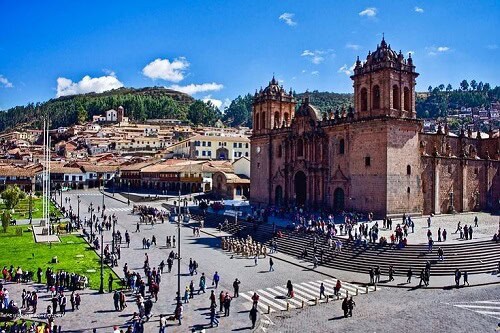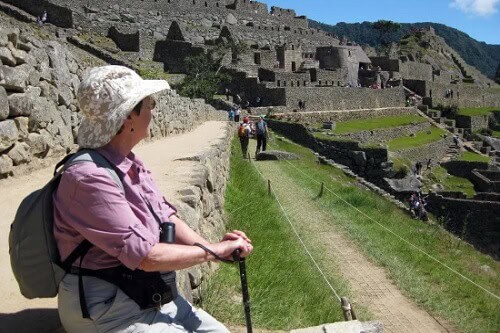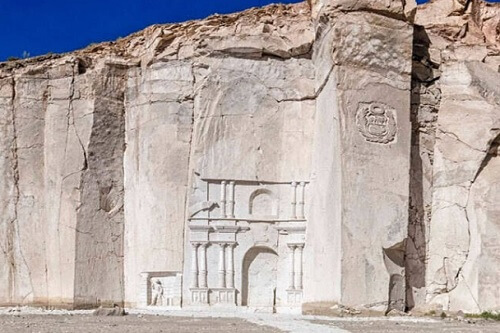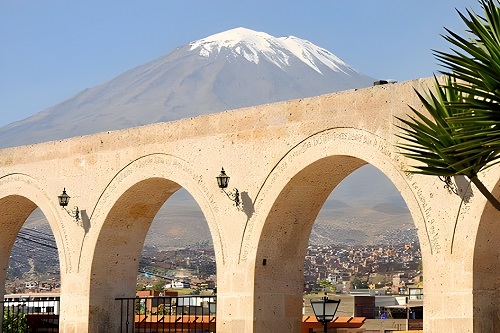Cusco City is the second-best-selling destination after Machu Picchu, and you can explore the highlights by taking this tour. Sacsayhuaman, which is about 30 minutes away from Cusco, is the main destination. You will also discover the colonial art mixed in a symbiosis with Native Inca motives representing the beliefs of the Andean culture.
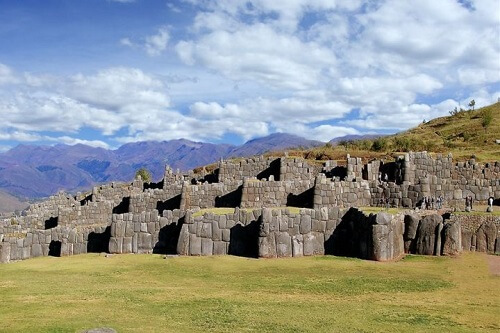


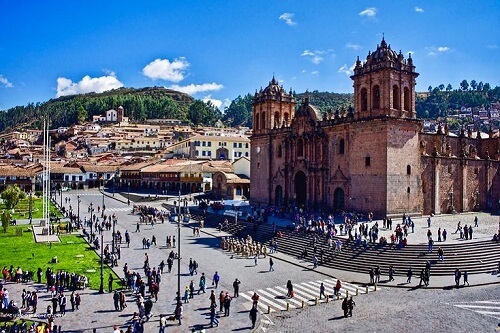


- Half day tour
- Dialy departures
- Group excursion
- Tourist transportation
- Entrance tickets
- Professional guide
Highlights
- Explore the amazing Inca Temple of the Ray in Sacsayhuaman.
- Find stone walls constructed of huge stones, weighing up to 120 tons.
- Learn about the symbiosis between the Catholic religion and the Inca religion.
- Appreciate unique colonial canvas of Cusqueña Art School.
Inclusions
- Pick up from the hotel, and way back (only in private)
- Tourist van or minibus with panoramic windows.
- English-speaking professional tour guide.
- Entrance tickets to the places to visit
Booking terms
- A full payment is required to confirm the reservation.
- Cancellations made less than 24 hours before the tour are nonrefundable.
- Cancellations made more than 24 hours before the tour are 100% refundable less the 5% for administrative fees.
- You need to provide the hotel or place to be picked up for the tour, and it must be within the Historical Center of Cusco.
- If the access of your hotel is remote please ask if we can pick up from there.
Itinerary
- Pick up time: at 08.30 am or 01.30 pm.
- Tour departs: From your hotel
- Tour ends: At your hotel
Departing in the morning or in the afternoon, this tour will take you to the highlights of Cusco city. We start with the Inca complex of Sacsayhuaman which is a huge archaeological complex that also includes other Inca sites like Qenqo, Tambomachay, and Puca Pucara. In Sacsayhuaman we will discover huge Inca walls with secrets of iconography that only a good eye could catch.
Then we return to the city to visit The Temple of the Sun Qorikancha (also spelled Koricancha or Coricancha), which is an ancient Incan temple considered one of the most important religious sites in the Incan Empire, and was dedicated to the worship of the sun god, Inti.
Qorikancha means «Golden Courtyard» in the Quechua language, and the temple was renowned for its exquisite architecture and lavish decoration. The walls were once covered in gold plates and the courtyard was filled with golden statues. The temple was also a center of astronomical observation and study, and the Incans built a sophisticated system of channels and canals to regulate the flow of water through the temple and control the temperature and humidity.
After the arrival of the Spanish conquistadors in the 16th century, the temple was partially destroyed and a Spanish colonial church was built on top of it. Today, visitors can see the remains of the Incan temple and the Spanish colonial church that was built on top of it, which is now known as the Church of Santo Domingo.
Then we continue the tour visiting the Cathedral of Cusco, and not for religious purposes. It is the major temple of the city and is located in front of the main plaza and was the Inca palace of Inca Viracocha. There are countless pieces of art from the Cusco art school throughout the entire Cathedral. Valuable works of art that are admirable and deserving of knowledge.
![]()
Discover and explore the Inca’s land and feel Peru’s magic with us!
Whatsapp
Icon-mail
Icon-phone-call
book now !
Temple of the Ray:
An important place of worship in Sacsayhuaman’s citadel was the temple of lightning. It is thought to have been a place of worship for Illapa, the Inca god of lightning. Illapa was a strong god in Inca mythology who commanded lightning and thunder and was revered as a protector of the Incas and their empire. It was constructed from huge stone blocks. No mortar was required to join the blocks together because they were carved and placed with such accuracy. The temple of lightning is thought to have been built in the 15th century, during the reign of the Inca Pachactec.
Cusco cathedral:
It is one of the most important religious buildings in Peru. The construction of the cathedral began in 1559 and was completed in 1669. It was built on the site of the temple of the Inca Wiracocha, which was destroyed by the Spanish conquistadors. The cathedral is a mix of architectural styles, including Renaissance, Baroque, and Gothic. It also has an impressive collection of religious art, with many works from the Cusco School, one of the most important schools of religious art in Latin America. The cathedral is famous for its main altar, which is made of silver and features many religious artworks and sculptures.
Temple of the Sun:
It was one of the most important temples of the Inca empire. The temple was a sacred place where the Inca priests worshiped the sun, their main deity. Its construction began in the 13th century and continued for the following centuries. The temple was made of stone and had impressive walls and gold decorations. It housed many sacred rooms and enclosures, each dedicated to a deity or aspect of nature. In addition to the sun, the moon, stars, lightning, and other gods were worshipped. The structure of the temple was partially destroyed by the Spanish conquerors in the 16th century.

